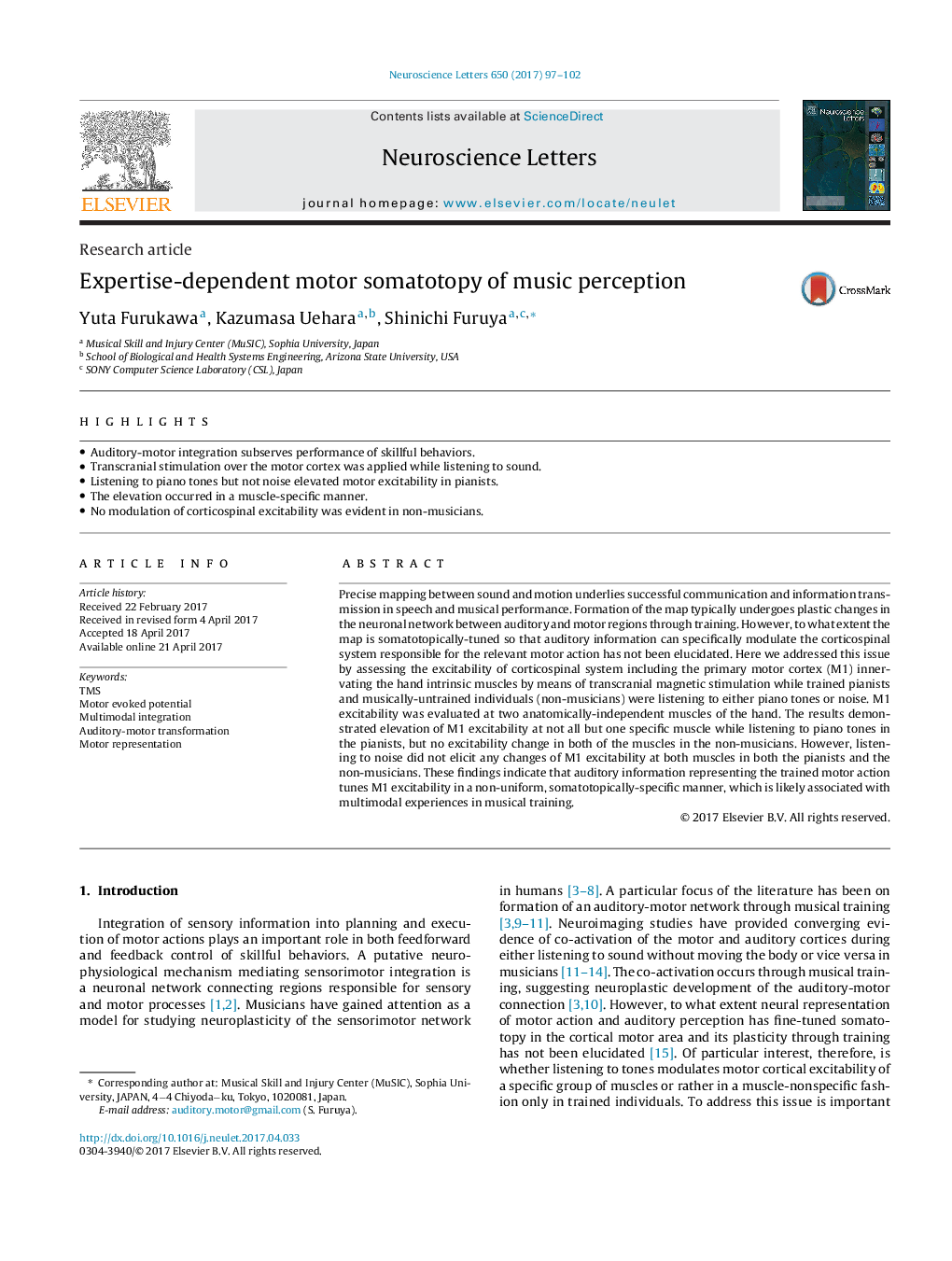| Article ID | Journal | Published Year | Pages | File Type |
|---|---|---|---|---|
| 5738349 | Neuroscience Letters | 2017 | 6 Pages |
â¢Auditory-motor integration subserves performance of skillful behaviors.â¢Transcranial stimulation over the motor cortex was applied while listening to sound.â¢Listening to piano tones but not noise elevated motor excitability in pianists.â¢The elevation occurred in a muscle-specific manner.â¢No modulation of corticospinal excitability was evident in non-musicians.
Precise mapping between sound and motion underlies successful communication and information transmission in speech and musical performance. Formation of the map typically undergoes plastic changes in the neuronal network between auditory and motor regions through training. However, to what extent the map is somatotopically-tuned so that auditory information can specifically modulate the corticospinal system responsible for the relevant motor action has not been elucidated. Here we addressed this issue by assessing the excitability of corticospinal system including the primary motor cortex (M1) innervating the hand intrinsic muscles by means of transcranial magnetic stimulation while trained pianists and musically-untrained individuals (non-musicians) were listening to either piano tones or noise. M1 excitability was evaluated at two anatomically-independent muscles of the hand. The results demonstrated elevation of M1 excitability at not all but one specific muscle while listening to piano tones in the pianists, but no excitability change in both of the muscles in the non-musicians. However, listening to noise did not elicit any changes of M1 excitability at both muscles in both the pianists and the non-musicians. These findings indicate that auditory information representing the trained motor action tunes M1 excitability in a non-uniform, somatotopically-specific manner, which is likely associated with multimodal experiences in musical training.
